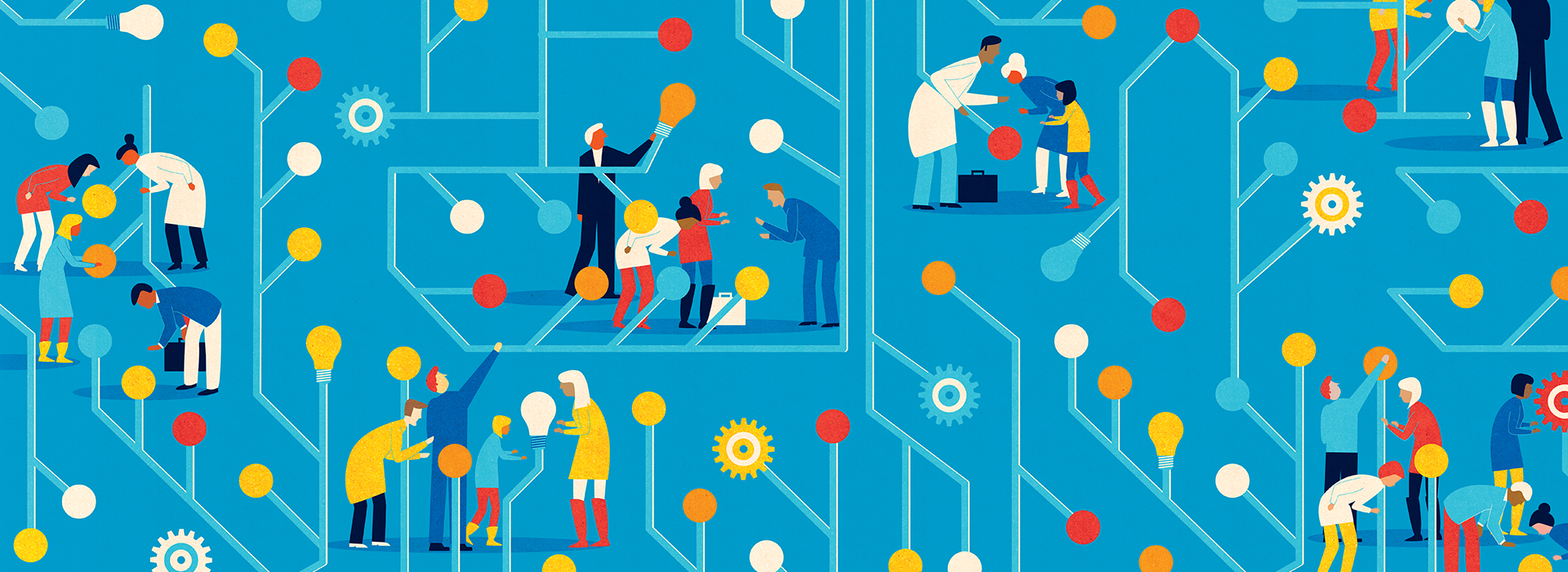By: Jon Farrow
3 Sep, 2019

Co-directors of CIFAR’s Innovation, Equity & the Future of Prosperity program discuss the economic pie and why we need interdisciplinary thinking to build a world where everyone can have a better slice.
Every discipline has its go-to metaphor. For quantum physics, it’s a cat that is both alive and dead. For genetics, it’s an instruction manual made of DNA.
Economics has pie.
One of the central concerns of traditional economics is whether society should concentrate on “growing the economic pie” by creating new technologies and producing widgets more efficiently, or ensuring slices of the pie are fairly and equitably distributed. This question is often presented as a trade-off.
The co-directors of the new CIFAR Innovation, Equity & the Future of Prosperity program, believe this is a false choice. We can, and must, find policies that do both.
Co-director Susan Helper, former chief economist at the US Department of Commerce in the Obama administration, professor of economics at Case Western Reserve University, and self-described “strange economist”, believes that it’s time to start thinking differently. “I think that the way the pie is created affects the way it’s distributed,” she says.
According to Dan Breznitz, co-director of the Innovation, Equity & the Future of Prosperity program and director of the Innovation Policy Lab at the Munk School of Global Affairs in Toronto, Israel presents a great case study in how complex these issues can be. In the 1970s, the country began investing in science-based industries to reverse an economic downturn. The effect of this investment was that in the 1990s, when the country experienced a large influx of highly educated immigrants from the former Soviet Union, it was able to integrate the newcomers through programs that incentivized participation in the already burgeoning high-tech industry.
“This was a success story,” says Amos Zehavi, professor at Tel Aviv University and associate director of the Innovation, Equity & the Future of Prosperity program. “But along the way, we realized something else. Not only was this a success in economic terms, but it was also a success in social terms as well. This really helped turn things around for the immigrants, for their families, and for the Russian community in general in Israel towards the end of the 1990s and into the 2000s.”
This kind of thinking, with both economic and social implications, leads to what Zehavi and Breznitz call “distribution-sensitive innovation policies.” They argue that these types of policies could be effective tools to address social disadvantage.
Breznitz also cautions that innovation stories from places like Israel are not straightforwardly rosy.
“Israel, at the end of all of this amazing growth, moved from being the second most egalitarian society in the OECD to a society where one out of every five households is under the poverty line,” he says. “This mirrors what we have seen in San Francisco, New York, and other centres of innovation.” While many social and economic benefits come from innovation, they aren’t often distributed evenly.
“It is very clear that the policies that we put around innovation influence its trajectory,” says Breznitz. But he warns that there is currently no effective means of predicting the full social impact of a given policy. As a result, he claims many important policy decisions are made blindly.
So how do we make better-informed decisions and find ways to grow the economic pie while making sure everyone gets a fair share? We need to start asking the right questions.
It starts with getting people with different perspectives around the table. “Who’s involved in the innovation process affects what the benefits look like,” says Helper. This is why the program membership includes not just innovation experts and political scientists like Breznitz and Zehavi, and economists like Helper, but also historians who understand how circumstances evolve over time and engineers who develop new technologies.
The solutions to the big challenges facing society, from climate change and antibiotic resistance to inequality and insecurity, will have both technical and social components. So if we want a world where innovation leads to a bigger economic pie, we also need to think about how it’s going to be sliced.